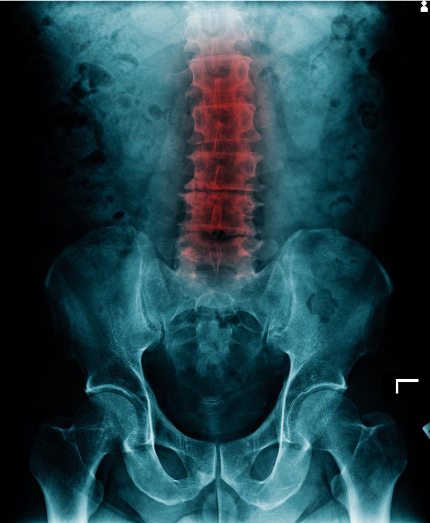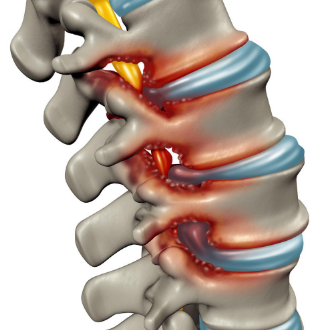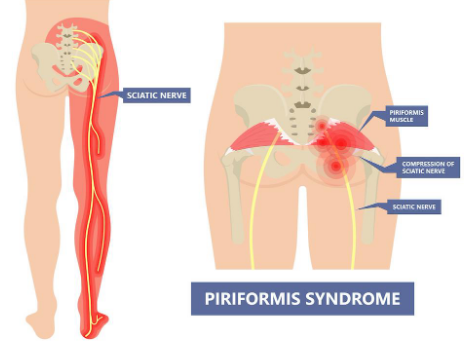What is Sciatica?
The sciatic nerve starts at the brain, travels down your spinal cord, through your spine and exits through the foramen of L4, S1, S2, and S3. It supplies the motor and sensory signals to your hamstrings and lower leg (below the knee). Sciatica or Sciatica pain is caused by an irritation of this nerve.
If you’re experiencing pain in one or more of these regions you may have sciatica: back, front of thigh, back of thigh, buttock, calf, or foot. It can be on one or both sides!
Sciatica pain Causes
Disc Herniations/bulges/ slipped disc
Discs are like jelly donuts. There is a gel like center that moves as the spine moves. As we age, the connective tissue of the lumbar disc can get weak, and as a result, the gel contents of that disc can push out and irritate the sciatic nerve. The main goal of treating a herniated disc is to reduce the disc, by combining the right stretches and exercises.

Degenerative Disc Disease
Joint degeneration is a normal process of aging. Like wrinkles, degeneration will occur as time progresses. As we get older, the water content of the spinal disc decreases, which can present itself as a condition called “DDD”. The degeneration of the spine won’t cause sciatica itself, but the altered biomechanics, or how it moves, can affect the nerve. The key to treating sciatica related to degenerative disc disease is by improving flexibility of the spine and hips

Arthritis and/or spinal stenosis
When bone rubs on bone, it grows. Arthritis of the spine is a normal part of the aging process. It can accelerate based on our flexibility, behaviors,and lifestyle. Arthritis can affect our spine by changing how it moves, but can also make it more challenging for our nerves to move efficiently.Spinal stenosis is a condition when the space where the nerve exists becomes more narrow.The smaller the space, the greater likelihood it is to irritate the nerves, resulting in conditions like sciatica pain. The key to fixing this type of problem is by opening up the space. This is sometimes remedied by surgical intervention and medications(like steroids), but you can recover without them!

Piriformis Syndrome
The sciatic nerve passes right underneath the piriformis muscle. A tight pirformis can irritate the sciatic nerve resulting in sciatica. The piriformisis often tight as a result of core instability and weakness. The best way to treat sciatic related to pifiromis syndrome is through stretching the muscle to calm it down and then add core strengthening to prevent flare ups

Other causes
Sciatica pain can have other causes not listed above(Fractures, cancer, immune issues, etc.). The key to addressing this is clearing out red flags and assess your options. You aren’t alone in this journey.

